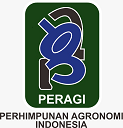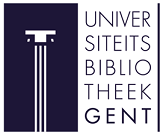Karakterisasi Sifat Fisikokimia Ekstrak dan Bubuk Hasil Pengeringan Beku Antosianin Kelopak Bunga Telang (Clitoria ternatea L.)
Abstract
Bunga telang memiliki kandungan antosianin yang dilaporkan mampu meningkatkan kapasitas antioksidan dan memberikan manfaat kesehatan Penelitian ini bertujuan untuk melakukan karakterisasi sifat fisikokimia ekstrak dan bubuk hasil pengeringan beku antosianin dari kelopak bunga telang. Penelitian diawali dengan proses ekstraksi pada kelopak bunga telang yang telah dikeringbekukan dan dibuat bubuk menggunakan tiga variasi pelarut yaitu etanol-asam sitrat 3% sebagai kontrol, air-asam sitrat 3%, dan air, serta dua variasi suhu ekstraksi yaitu 4°C dan 30°C. Hasil penelitian menunjukkan bahwa ekstraksi optimum didapatkan pada suhu 4°C. Variasi pelarut menghasilkan kadar antosianin yang tidak berbeda (P>0,05). Setelah ekstraksi dan analisis kimia, ekstrak dikeringbekukan menggunakan variasi perbandingan ekstrak:maltodekstrin (1:0,25; 1:0,5; dan 1:0,75 b/b). Kondisi pengeringan optimum didapatkan pada variasi perlakuan dengan perbandingan ekstrak:maltodekstrin 1:0,25 (b/b) yang ditandai dengan total antosianin tertinggi (0,71±0,02 mg/g) pada bubuk yang dibuat menggunakan ekstrak dengan pelarut air. Kelarutan dan viskositas pada sampel tersebut tidak berbeda (P>0,05) terhadap perlakuan lainnya. Sementara itu, Aw dan kadar air pada sampel tersebut lebih tinggi jika dibanding perlakuan lainnya, namun masih dalam rentang syarat minuman bubuk (kadar air 3-5% dan Aw<0,6). Dapat disimpulkan bahwa bubuk dari proses ekstraksi dengan air suhu 4°C dilanjutkan pengeringan beku dengan penambahan maltodekstrin (1:0,025, b/b) memiliki karakteristik fisikokimia terbaik dan sesuai syarat mutu fisik minuman bubuk.
Keywords
Full Text:
PDFReferences
Ali, A., Chong, C. H., Mah, S. H., Abdullah, L. C., Choong, T. S. Y., & Chua, B. L. (2018). Impact of Storage Conditions on the Stability of Predominant Phenolic Constituents and Antioxidant Activity of Dried Piper betle Extracts. Molecules 2018, Vol. 23, Page 484, 23(2), 484. https://doi.org/10.3390/MOLECULES23020484
Arilla, E., Igual, M., Martínez-Monzó, J., Codoñer-Franch, P., & García-Segovia, P. (2020). Impact of Resistant Maltodextrin Addition on the Physico-Chemical Properties in Pasteurized Orange Juice. Foods 2020, Vol. 9, Page 1832, 9(12), 1832. https://doi.org/10.3390/FOODS9121832
Baeza, R., Sánchez, V., Salierno, G., Molinari, F., López, P., & Chirife, J. (2021). Storage stability of anthocyanins in freeze-dried elderberry pulp using low proportions of encapsulating agents. Food Science and Technology International, 27(2), 135–144. https://doi.org/10.1177/1082013220937867
Braga, M. B., Veggi, P. C., Codolo, M. C., Giaconia, M. A., Rodrigues, C. L., & Braga, A. R. C. (2019). Evaluation of freeze-dried milk-blackberry pulp mixture: Influence of adjuvants over the physical properties of the powder, anthocyanin content and antioxidant activity. Food Research International, 125, 108557. https://doi.org/10.1016/J.FOODRES.2019.108557
Burton-Freeman, B., Brzeziński, M., Park, E., Sandhu, A., Xiao, D., & Edirisinghe, I. (2019). A Selective Role of Dietary Anthocyanins and Flavan-3-ols in Reducing the Risk of Type 2 Diabetes Mellitus: A Review of Recent Evidence. Nutrients 2019, Vol. 11, Page 841, 11(4), 841. https://doi.org/10.3390/NU11040841
Chusak, C., Thilavech, T., Henry, C. J., & Adisakwattana, S. (2018). Acute effect of Clitoria ternatea flower beverage on glycemic response and antioxidant capacity in healthy subjects: a randomized crossover trial. BMC Complementary and Alternative Medicine, 18(1). https://doi.org/10.1186/S12906-017-2075-7
Domínguez, R., Zhang, L., Rocchetti, G., Lucini, L., Pateiro, M., Munekata, P. E. S., & Lorenzo, J. M. (2020). Elderberry (Sambucus nigra L.) as potential source of antioxidants. Characterization, optimization of extraction parameters and bioactive properties. Food Chemistry, 330, 127266. https://doi.org/10.1016/J.FOODCHEM.2020.127266
Ekaputra, T., & Pramitasari, R. (2020). Evaluation of physicochemical properties of anthocyanin extracts and powders from purple sweet potato (Ipomoea batatas L.). Food Research, 4(6), 2020–2029. https://doi.org/10.26656/fr.2017.4(6).195
Escher, G. B., Wen, M., Zhang, L., Rosso, N. D., & Granato, D. (2020). Phenolic composition by UHPLC-Q-TOF-MS/MS and stability of anthocyanins from Clitoria ternatea L. (butterfly pea) blue petals. Food Chemistry, 331, 127341. https://doi.org/10.1016/J.FOODCHEM.2020.127341
Estupiñan-Amaya, M., Fuenmayor, C. A., & López-Córdoba, A. (2020). New Freeze-Dried Andean Blueberry Juice Powders for Potential Application as Functional Food Ingredients: Effect of Maltodextrin on Bioactive and Morphological Features. Molecules 2020, Vol. 25, Page 5635, 25(23), 5635. https://doi.org/10.3390/MOLECULES25235635
Jaafar, N. F., Ramli, M. E., & Salleh, R. M. (2020). Optimum Extraction Condition of Clitorea ternatea Flower on Antioxidant Activities, Total Phenolic, Total Flavonoid and Total Anthocyanin Contents. Tropical Life Sciences Research, 31(2), 1. https://doi.org/10.21315/TLSR2020.31.2.1
Kementerian Kesehatan RI. (2018). Laporan Nasional Riskesdas. http://labdata.litbang.kemkes.go.id/images/download/laporan/RKD/2018/Laporan_Nasional_RKD2018_FINAL.pdf
Latimer, G. (Ed.). (2019). Official methods of analysis of AOAC International (21st ed., Vol. 1). AOAC International. http://www.library.usd.ac.id/web/index.php?pilih=search&p=1&q=0000145989&go=Detail
Le, X. T., Huynh, M. T., Pham, T. N., Than, V. T., Toan, T. Q., Bach, L. G., & Trung, N. Q. (2019). Optimization of Total Anthocyanin Content, Stability and Antioxidant Evaluation of the Anthocyanin Extract from Vietnamese Carissa Carandas L. Fruits. Processes 2019, Vol. 7, Page 468, 7(7), 468. https://doi.org/10.3390/PR7070468
Liu, Y., Liu, Y., Tao, C., Liu, M., Pan, Y., & Lv, Z. (2018). Effect of temperature and pH on stability of anthocyanin obtained from blueberry. Journal of Food Measurement and Characterization 2018 12:3, 12(3), 1744–1753. https://doi.org/10.1007/S11694-018-9789-1
Ma, Y., Feng, Y., Diao, T., Zeng, W., & Zuo, Y. (2020). Experimental and theoretical study on antioxidant activity of the four anthocyanins. Journal of Molecular Structure, 1204, 127509. https://doi.org/10.1016/J.MOLSTRUC.2019.127509
Njus, D., Kelley, P. M., Tu, Y. J., & Schlegel, H. B. (2020). Ascorbic acid: The chemistry underlying its antioxidant properties. Free Radical Biology and Medicine, 159, 37–43. https://doi.org/10.1016/J.FREERADBIOMED.2020.07.013
Papoutsis, K., Golding, J. B., Vuong, Q., Pristijono, P., Stathopoulos, C. E., Scarlett, C. J., & Bowyer, M. (2018). Encapsulation of Citrus By-Product Extracts by Spray-Drying and Freeze-Drying Using Combinations of Maltodextrin with Soybean Protein and ι-Carrageenan. Foods 2018, Vol. 7, Page 115, 7(7), 115. https://doi.org/10.3390/FOODS7070115
Pham, T. N., Le, X. T., Nguyen, P. T. N., Tran, T. H., Dao, T. P., Nguyen, D. H., Danh, V. T., & Anh, H. L. T. (2020). Effects of storage conditions on total anthocyanin content of Butterfly pea flower (Clitoria ternatea L.). IOP Conference Series: Materials Science and Engineering, 736(6), 062005. https://doi.org/10.1088/1757-899X/736/6/062005
Rangasamy, P., Hansiya, V. S., Maheswari, P. U., Suman, T., & Geetha, N. (2019). Phytochemical Analysis and Evaluation of In vitro Antioxidant and Anti-urolithiatic Potential of various fractions of Clitoria ternatea L. Blue Flowered Leaves . Asian Journal of Pharmaceutical Analysis, 9(2), 67. https://doi.org/10.5958/2231-5675.2019.00014.0
Sethi, S., Joshi, A., Arora, B., Bhowmik, A., Sharma, R. R., & Kumar, P. (2020). Significance of FRAP, DPPH, and CUPRAC assays for antioxidant activity determination in apple fruit extracts. European Food Research and Technology 2020 246:3, 246(3), 591–598. https://doi.org/10.1007/S00217-020-03432-Z
Shi, P., Du, W., Wang, Y., Teng, X., Chen, X., & Ye, L. (2019). Total phenolic, flavonoid content, and antioxidant activity of bulbs, leaves, and flowers made from Eleutherine bulbosa (Mill.) Urb. Food Science & Nutrition, 7(1), 148–154. https://doi.org/10.1002/FSN3.834
Slavu, M., Aprodu, I., Milea, Ștefania A., Enachi, E., Râpeanu, G., Bahrim, G. E., & Stănciuc, N. (2020). Thermal Degradation Kinetics of Anthocyanins Extracted from Purple Maize Flour Extract and the Effect of Heating on Selected Biological Functionality. Foods 2020, Vol. 9, Page 1593, 9(11), 1593. https://doi.org/10.3390/FOODS9111593
Tang, B., He, Y., Liu, J., Zhang, J., Li, J., Zhou, J., Ye, Y., Wang, J., & Wang, X. (2019). Kinetic investigation into pH-dependent color of anthocyanin and its sensing performance. Dyes and Pigments, 170, 107643. https://doi.org/10.1016/J.DYEPIG.2019.107643
Yamashita, C., Chung, M. M. S., dos Santos, C., Mayer, C. R. M., Moraes, I. C. F., & Branco, I. G. (2017). Microencapsulation of an anthocyanin-rich blackberry (Rubus spp.) by-product extract by freeze-drying. LWT, 84, 256–262. https://doi.org/10.1016/J.LWT.2017.05.063
Yaribeygi, H., Sathyapalan, T., Atkin, S. L., & Sahebkar, A. (2020). Molecular Mechanisms Linking Oxidative Stress and Diabetes Mellitus. Oxidative Medicine and Cellular Longevity, 2020. https://doi.org/10.1155/2020/8609213
Zhang, C., Quek, S. Y., Fu, N., Liu, B., Kilmartin, P. A., & Chen, X. D. (2019). A study on the structure formation and properties of noni juice microencapsulated with maltodextrin and gum acacia using single droplet drying. Food Hydrocolloids, 88, 199–209. https://doi.org/10.1016/J.FOODHYD.2018.10.002
Refbacks
- There are currently no refbacks.



























